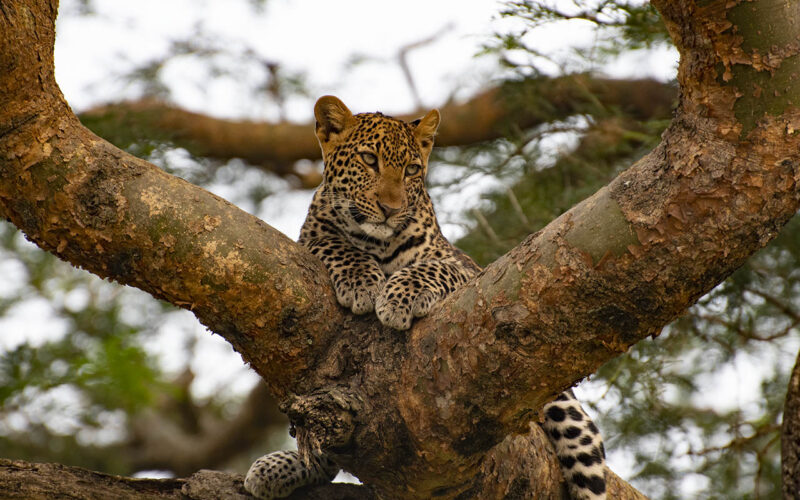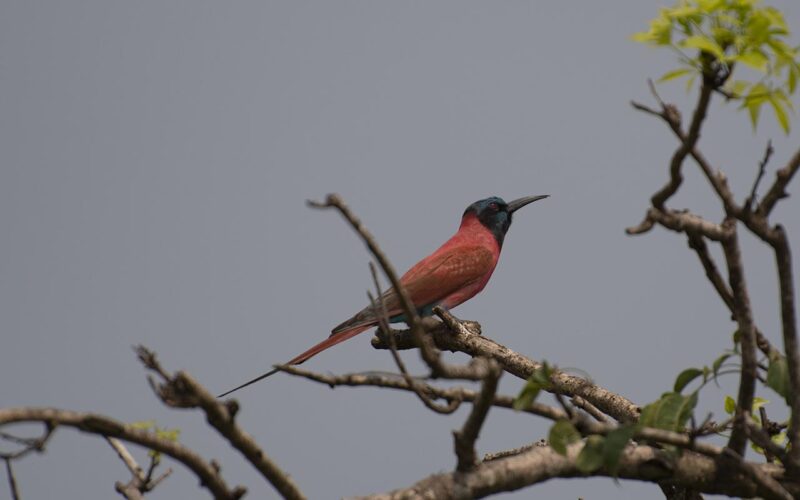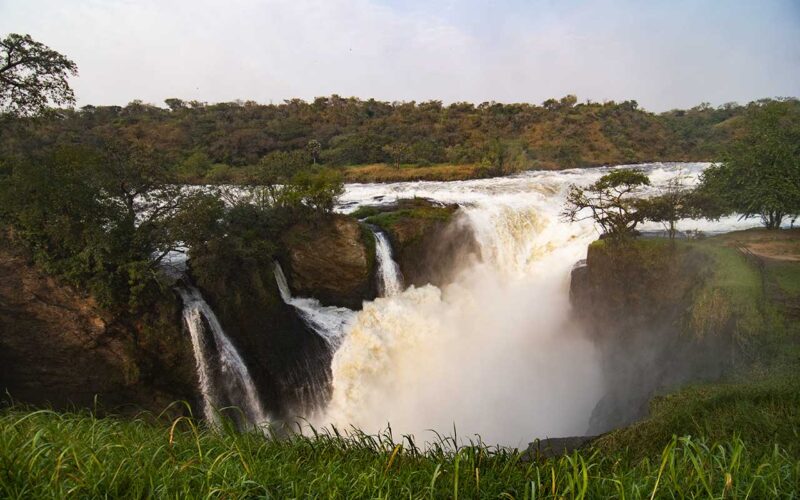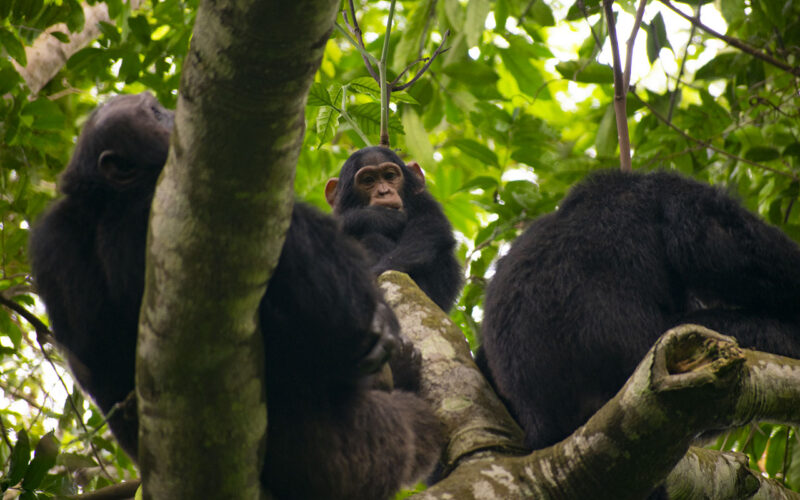Murchison Falls National Park is Uganda’s most popular safari destination offering a rewarding wildlife experience amidst spectacular scenery including game-rich grasslands, River Nile and the Murchison Falls from which it derives it name. Covering up to 3840 km2, Murchison Fall NP is Uganda’s largest national park, lying close to 300km or 4hrs drive north-west of the capital city of Kampala.
Murchison Falls National Park Facts and Habitat Biodiversity
- Park Size: 3840 km2
- Altitude: 619m–1292m
- Mammal species: 76 mammals
- Bird species: 480 birds
- Drive time from Kampala – 320 km/5 hrs.
- Location: Northwestern Uganda
Murchison Falls National Park together with Bugungu Wildlife Reserve, Budongo Forest and Karuma Wildlife Reserve are protected collectively in a 5000sq km Murchison Falls Conservation Area. This biodiversity rich area comprises of a wide range of habitats from vast savanna grasslands dotted with Borassus palms, River Nile and the extensive wetlands that flank it, tropical forests, woodlands, scrub and dry bush.
At the confluence of the River Nile and Lake Albert lies an expansive Delta where papyrus and other marshes dominate also recognized as an important breeding area notably for the prehistoric Shoebill.
Popular Attractions, Activities and Things to do while at Murchison Falls National Park

-
Take Untamed Wildlife Game Drives
Murchison Falls National Park offers the most rewarding wildlife safari expereince in Uganda bringing you up-close to abundant game across the park’s plethora of habitats. The diversity of game here includes; the largest populations of Nubian (Rothschilds) Giraffe and Uganda Kob but also 4 of the famous Africa Big 5. Other wildlife include, Jackson’s (Lelwel’s) Hartebeest, Oribi, Common Warthog, Cape Buffalo, terrestrial Patas Monkey among others.
The woodlands are tamed by herds of African Savanna Elephants, Bushbuck and Deffassa Waterbuck. Carnivores are well represented including Lion, the elusive Leopard, Spotted Hyena, Side-striped Jackal and several mongoose species.
-
Bird Watching at Murchison Falls National Park
Murchison Falls National Park is Uganda’s top birding hotspot with a checklist of over 480 species of birds occurring across the park’s varied habitats. The park’s geographic location along the migration corridor for north-to-south migrating species and intra-African voyagers brings in specialists from flocks of Northern-Carmine Bee-eater, Egyptian Plover, Pennant-winged Nightjar, Red-backed Shrike, Northern Wheatear, Montagu’s and Pallid Harriers, etc.
The wetlands around the Nile Delta not only host Lake Victoria biome species including Caruthers’s Cisticola, Papyrus Gonolek but also the prehistoric Shoebill often found stalking the shallow vegetated delta edges. Towards the mouth of L. Albert congregations of African Skimmers and other waders occur.
Other quality highlights include Silverbird, Red-throated, Swallow-tailed and Little Green Bee-eaters, Rattling Cisticola, Abyssinian Ground Hornbill, Dark Chanting Goshawk, Black-billed Wood-Dove, Vinaceous Dove, Grey Kestrel, Red-winged Prinia, Red-winged Grey Warbler, Beaudouin’s Snake-Eagle, Martial Eagle, Denham and Black-bellied Bustards, Spotted Thick-knee, Piac-piac, Speckle-fronted Weaver and more.

-
Take a Boat Cruise on the Nile
A boat cruise safari on Victoria Nile while in Murchison Falls NP is a popular highlight to safari enthusiasts that visit here. A boat cruise upstream the Nile bring you into a full view the mighty Murchison Falls formed as the Nile crushes through a 6m rock craft in the escarpment wall and through a 40m canyon before peaceful flowing down to Lake Albert on the rift valley floor. Wildlife is abundant along the Nile banks from hippos, to Nile Monitor, Nile Crocodiles, buffalos, elephants and more. Birdlife is also excellent especially the dazzling Red-throated Bee-eaters which nest in the sandy cliffs.
Another exciting boat cruise leads downstream to the Delta point, a point where the Nile pour its effluent into Lake Albert. Here, the slow-moving Victoria Nile now about 2 km wide discharges its silt through a maze of papyrus before heading north into the Sudan as White Nile. This papyrus marsh is a great birdwatching area with a healthy checklist of papyrus and wetland specialists including the world’s biggest heron the giant Goliath Heron and the prehistoric Shoebill.

-
Hike to the Top of Murchison Falls National Park
The spectacular Murchison Falls occur as the mighty and wide Victoria Nile squeezes through a 6m wide escarpment wall crack with a sheer force and tumbling through a 40m canyon thus creating the world’s most powerful waterfalls. A visit here, gives you great views deep into the famous Devils cauldron, a deep canyon cut through the escarpment wall by the thunderous voluminous Nile waters creating mist and permanent rainbow.
On the highest viewpoint over the canyon, you get a full perspective watching the Nile as it plunges into this canyon. With time on your hands, take a hike down to the famous Baker’s point to get a full view of not only the Murchison falls but also the Uhuru Falls.

-
Trek up-close the Chimpanzee at Budongo Forest
While at Murchison Falls National Park, trek up-close chimpanzee in the nearby Kaniyo Pabidi sector of Budongo Forest. This Uganda’s largest intact low-altitude forest is dominated by mahogany and ironwood species of trees and hosts the biggest number of Chimpanzee population in Uganda estimated at about 5000 strong spreads in different communities. This epic guided activity starts early towards several habituated communities of this great primate lasting up to 4-hours or more.
Other primates include Black and White Colobus Monkeys (Guerezza), Olive Baboon, Vervet Monkey, Grey-cheeked Mangabey and the Red-tailed Monkey.
Popular Safaris to Murchison Falls National Park
Tailored safari expereince to Murchison Falls National Park offer a full loaded and holistic adventure. Top highlights to include on a tour; game viewing drives, Nile boat safari to view the majestic Murchison falls, Top of the falls hike, chimpanzee trekking, birdwatching and more.
- 3-Days Murchison Falls Tour
- 15-Days Best of Uganda Safaris
Important Information and Tips to Murchison Falls NP
-
How to get to Murchison falls NP
Murchison Falls NP lies about 300km from Kampala where you might need up to 4-hrs drive. Visitors with a short time they can opt for a fly-in safari landing at Pakuba airstrip in the heart of the game rich grasslands of the park.
-
Where to Stay while at Murchison Falls National Park
A wide range of excellent accommodations serve Murchison falls from various properties from super luxury to moderate and to rustic. The most popular include; Paara Safari Lodge, Pakuba Safari Lodge, Sambiya River Lodge that lie within the park giving you chances of early and late starts of the safari.
Outside the park is; Nile Safari Lodge, Twiga Safari Lodge, Murchison River Lodge, Bamboo Village and more that lie on the southern banks of River Nile. On the Northern banks of the Nile is; Fort Murchison Lodge, Heritage Lodge and more.
